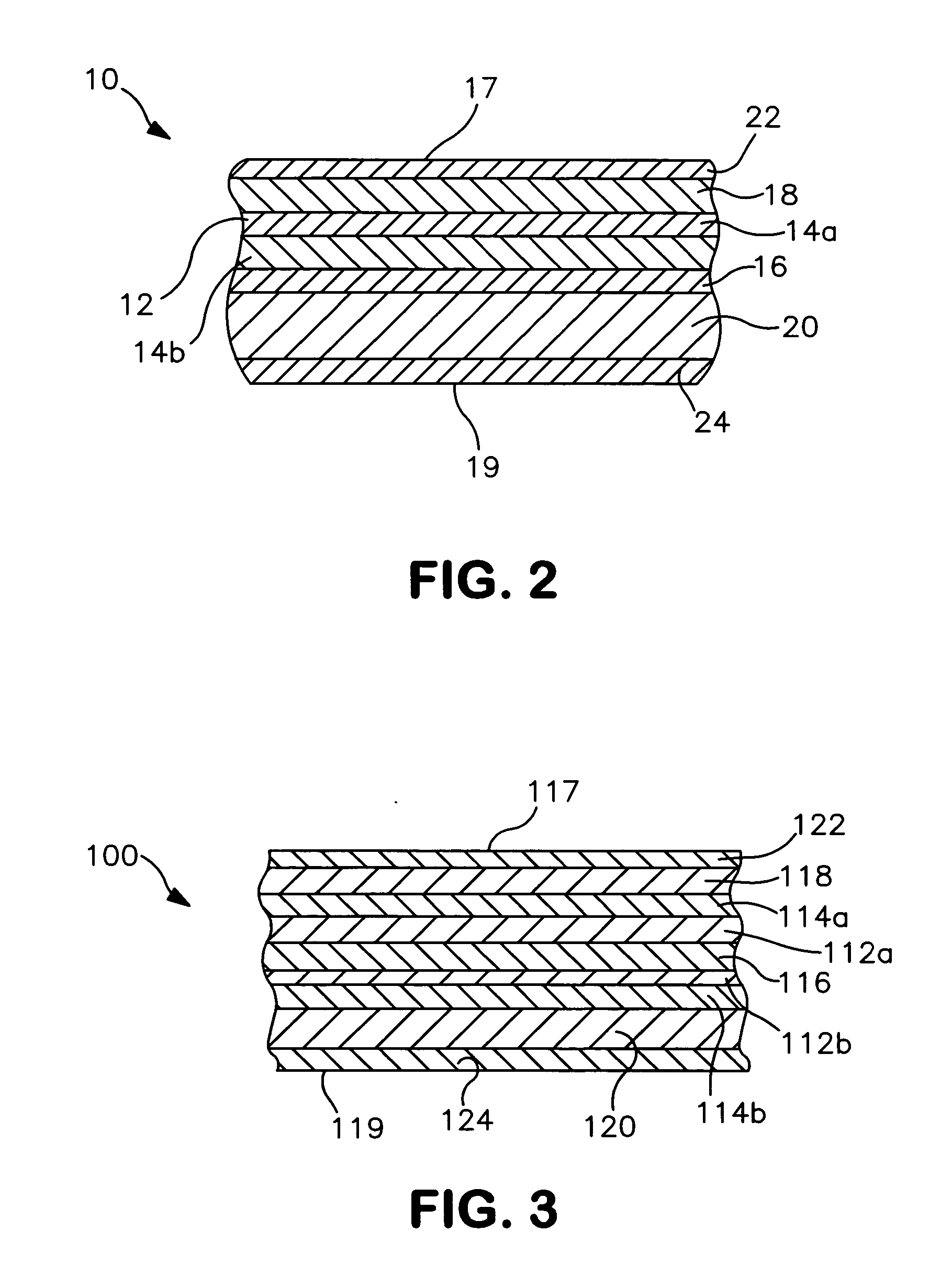Thermal coverings
a technology of thermal coverings and insulating pads, applied in the field of thermal coverings, can solve the problems of excessive water use in the composition, reduced body's ability to self-regulate body temperature, and difficult control of usui for most applications,
- Summary
- Abstract
- Description
- Claims
- Application Information
AI Technical Summary
Benefits of technology
Problems solved by technology
Method used
Image
Examples
example 1
[0073] The ability to form a warmth-providing substrate in accordance with the present invention was demonstrated. Initially, a bonded carded web fabric was provided that had a size of 8″ by 11″ and a basis weight of 1.5 ounces per square yard. The fabric was formed from a blend of 60 wt. % bicomponent fibers and 40 wt. % polyester fibers. The bicomponent fibers were obtained from Fibervisions, Inc. of Covington, Ga. under the name “ESC 215”, which had a polyethylene sheath and polypropylene core, a denier of 1.5, and 0.55 wt. % “HR6” finish. The polyester fibers were obtained from Invista of Wichita, Kans. under the name “T-295”, which had a denier of 6.0 and contained a 0.5 wt. % L1 finish.
[0074] The coating formulation was prepared as follows. Initially, 420.0 grams of iron powder and 22.1 grams of sodium chloride (Mallinckrodt) were slowly added to 500 grams of activated carbon ink while stirring. The iron powder was obtained from Sigma-Aldrich Co. of St. Louis, Mo. and had a p...
example 2
[0079] The ability to form a warmth-providing substrate in accordance with the present invention was demonstrated. Initially, a bonded carded web fabric was provided that had a size of 7″ by 12.5″ and a basis weight of 0.9 ounces per square yard. The fabric was formed from a blend of 75 wt. % bicomponent fibers and 25 wt. % polyester fibers. The bicomponent fibers were obtained from Fibervisions, Inc. of Covington, Ga. under the name “ESC 215”, which had a polyethylene sheath and polypropylene core, a denier of 3.0, and 0.55 wt. % “HR6” finish. The polyester fibers were obtained from Invista of Wichita, Kans. under the name “T-295”, which had a denier of 6.0 and contained a 0.5 wt. % L1 finish.
[0080] The coating formulation was prepared as follows. In a 400-milliliter pyrex beaker, 5.0 grams of “Metolose SM4000” (methyl cellulose, available from Shin-Etsu Chemical Co., Ltd.) and 12.5 grams of sodium chloride (Mallinckrodt) were added to 151.8 grams of warm (ca. 70° C.) distilled wa...
example 3
[0085] The ability to form a warmth-providing substrate in accordance with the present invention was demonstrated. Initially, a 14″-wide roll of a bonded carded web fabric was provided that had a basis weight of 0.9 ounces per square yard. The fabric was formed from a blend of 75 wt. % bicomponent fibers and 25 wt. % polyester fibers. The bicomponent fibers were obtained from Fibervisions, Inc. of Covington, Ga. under the name “ESC 215”, which had a polyethylene sheath and polypropylene core, a denier of 3.0, and 0.55 wt. % “HR6” finish. The polyester fibers were obtained from Invista of Wichita, Kans. under the name “T-295”, which had a denier of 6.0 and contained a 0.5 wt. % L1 finish.
[0086] The coating formulation was prepared as follows. In a 2-gallon metal pail, 2,562.7 grams of iron powder and 134.2 grams of sodium chloride (Mallinckrodt) were slowly added to 3,047.7 grams of activated carbon ink while stirring. The iron powder was obtained from North American Höganäs under t...
PUM
 Login to View More
Login to View More Abstract
Description
Claims
Application Information
 Login to View More
Login to View More - R&D
- Intellectual Property
- Life Sciences
- Materials
- Tech Scout
- Unparalleled Data Quality
- Higher Quality Content
- 60% Fewer Hallucinations
Browse by: Latest US Patents, China's latest patents, Technical Efficacy Thesaurus, Application Domain, Technology Topic, Popular Technical Reports.
© 2025 PatSnap. All rights reserved.Legal|Privacy policy|Modern Slavery Act Transparency Statement|Sitemap|About US| Contact US: help@patsnap.com



